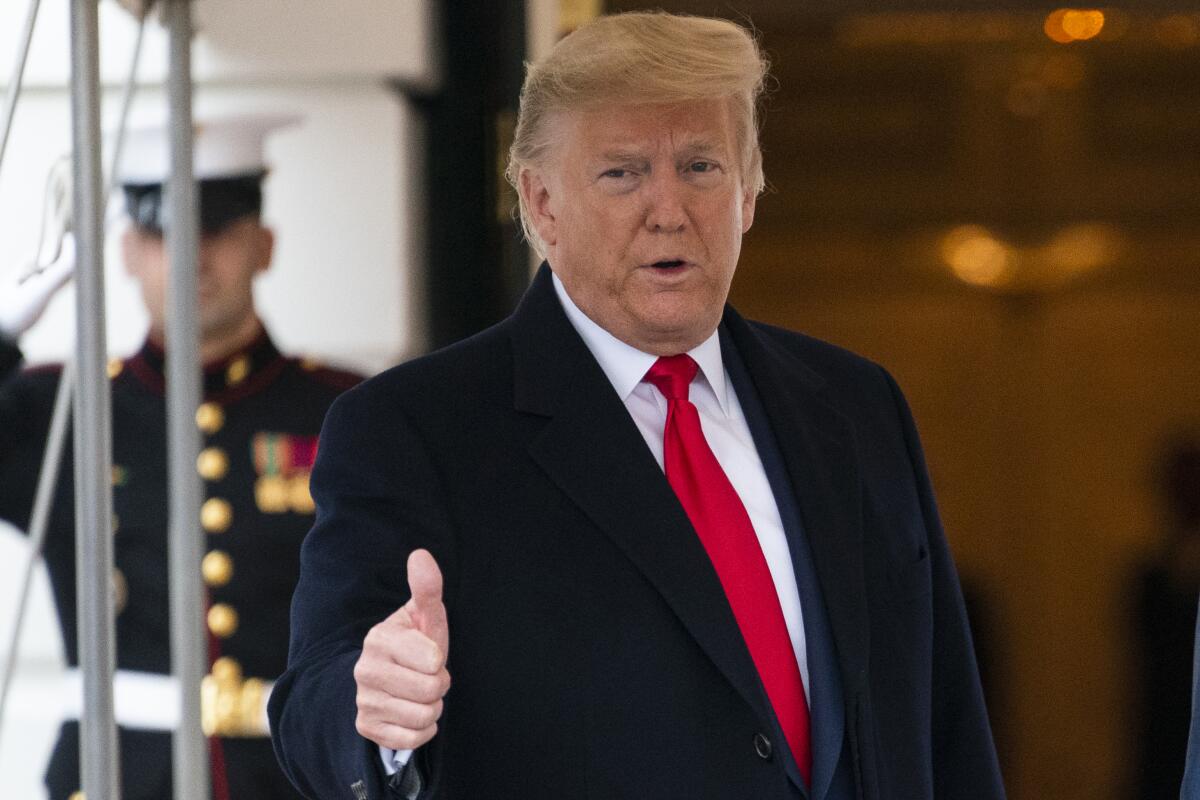Opinion: Trump just unveiled his latest budget. It screams bad faith

Imagine for a moment that two people running a business together have a dispute over where to invest their funds, so they strike a compromise and write it into their contract. For two years, they agree, a little more than half of the money will go toward plant and equipment, and the rest toward labor costs. A few months later, however, one of them says they’re borrowing too much, so he proposes to cut spending sharply — but just on labor.
That’s a clear deal-breaker, right? And yet that’s exactly what President Trump is proposing to do in his latest budget: renege on the agreement he struck with congressional Democrats last July by cutting non-defense spending while continuing to increase the defense budget. The share dedicated to defense spending would grow steadily under Trump’s proposal, escalating from 53% this year to 55% in fiscal 2021 and 62% in fiscal 2030.
Trump’s allies argue that the budget deal merely set caps on spending, but that’s a fantasy. Democrats and Republicans fight hard over the numbers because the two caps — one on defense and the other on non-defense programs — also effectively set floors. Just as important, these agreements declare what the balance ought to be between the two types of spending. And lawmakers agreed to a two-year deal in 2019 to avoid having another tough budget fight in the months leading up to the presidential election.
Which is not to say that the deal cannot be improved upon, because every compromise has its flaws. But it screams bad faith to sign a budget deal into law, then turn around a few months later and propose a budget that does not hew to the spirit of that deal.
Granted, this is all academic. Presidential budgets are, to put it kindly, aspirational documents, and Congress routinely ignores the initiatives they tout. They’re also political documents, and Trump’s latest is clearly aimed at blaming on Democrats the budget deficit he has super-sized by seeking vast increases in military spending while cutting federal tax rates.
(Please, hold your comments about federal revenues going up in non-inflation-adjusted terms after the GOP tax cuts went into effect in 2018. The problem with the tax cuts isn’t that they cut the absolute amount of revenue, but that they left the federal government with less money than it would have collected had there been no tax cuts. And the brief spurt in GDP growth seen in the wake of the tax cuts wasn’t enough to make up for the amount of revenue forgone.)
The federal deficit is clearly a problem, one that has been exacerbated by relatively slow growth, rising healthcare costs and an aging population. And while Democrats and liberal advocacy groups tend to scream at any proposed budget cuts, spending is on an unsustainable path. Big changes must be made.
Trump’s budget proposal includes sensible proposals to achieve efficiencies (for example, by eliminating duplicative programs) as well as punitive measures that attack the symptoms of poverty rather than the sources (for example, the tougher proposed work requirements for food stamp recipients, which are supposed to magically push people into self-sufficiency). And then there’s the laughable idea that Trump’s vague “healthcare reform vision” would save nearly $600 billion in the coming decade when he can’t even get a majority of Republicans in Congress behind it.
Regardless, there are things in here that Congress and the president could and should agree on, including the overarching need to rein in the deficit. But by abandoning the deal he struck a little more than six months ago, Trump sends a different message to Democrats about fiscal responsibility: Don’t bother working with the White House.
More to Read
A cure for the common opinion
Get thought-provoking perspectives with our weekly newsletter.
You may occasionally receive promotional content from the Los Angeles Times.







